
Fifty years ago, the Prince of Wales was invested with his title on July 1 in 1969.
The ceremony, watched by a television audience of 19 million people in the UK, and millions more worldwide, was two years in the planning.
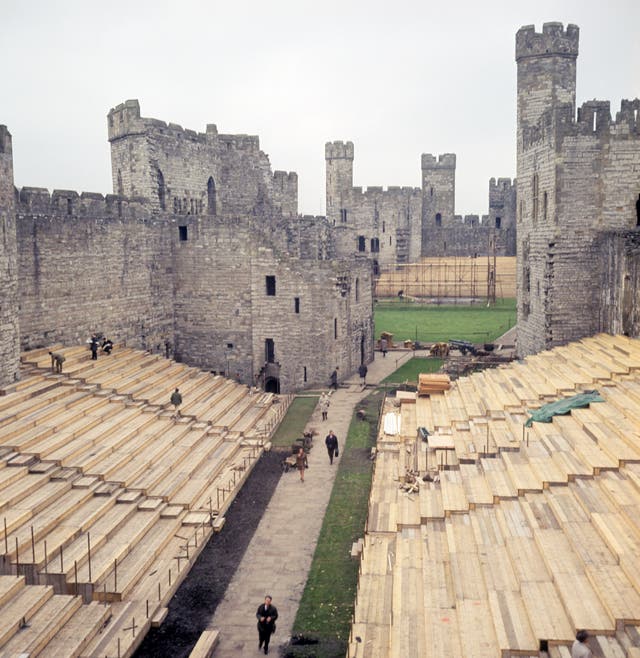
Ministry of Works officials were tasked with delivering the pageant, which symbolised the heir to the throne’s coming of age.
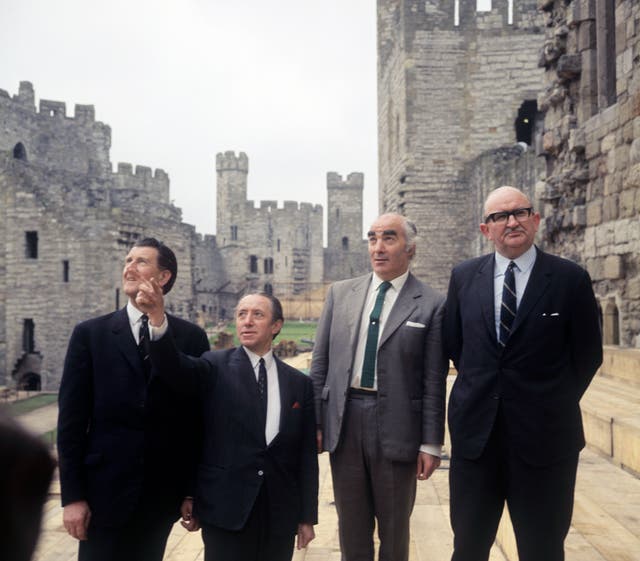
They operated under the direction of the Queen’s brother-in-law, society photographer the Earl of Snowdon, who was deemed the man to organise a traditional ceremony for the television age on a shoestring budget of £50,000.
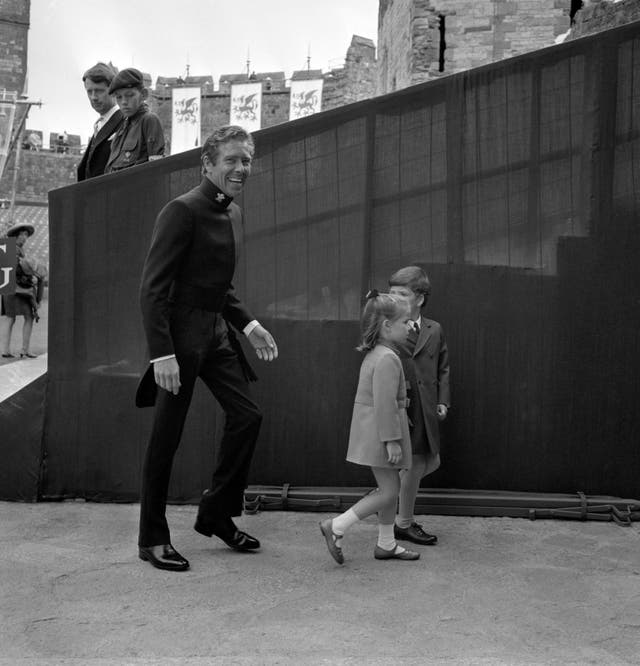
There were intense preparations for Charles as well.
From April of that year, he spent nine weeks at the University of Aberystwyth learning Welsh.
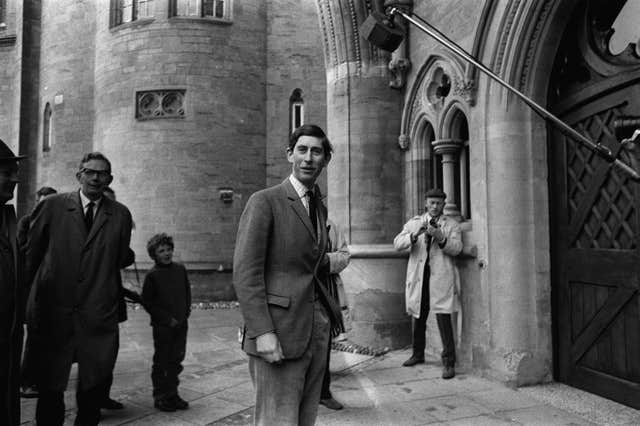
It was an attempt by the royal family to address scepticism of Charles as a Prince of Wales, with the investiture seen by some as representing centuries of English occupation in Wales.
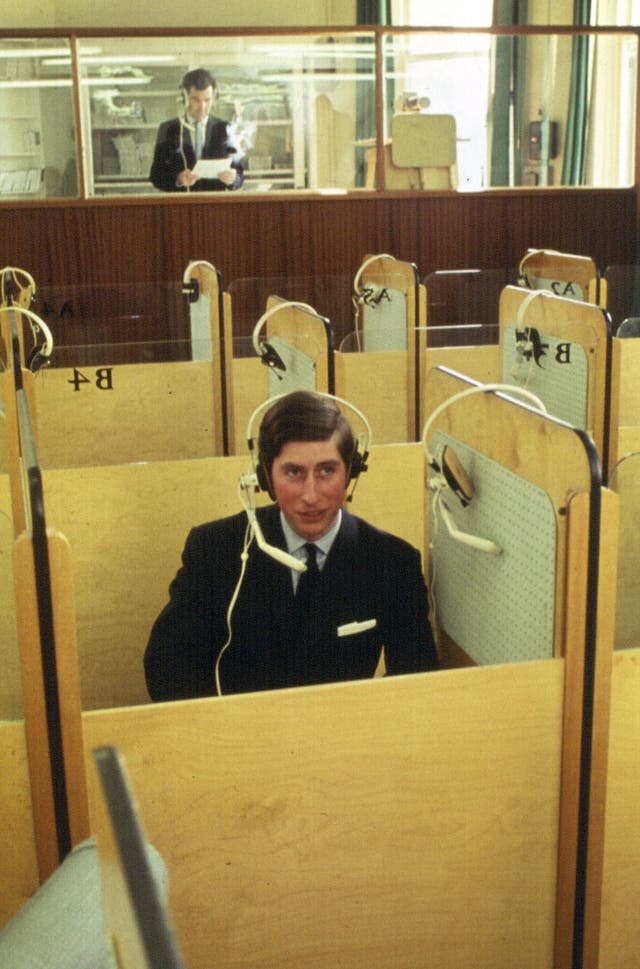
The month before the spectacle, the royals invited cameras into their home for the first time with an unprecedented fly-on-the-wall television documentary – The Royal Family.
It showed day-to-day family life, from the Duke of Edinburgh frying sausages on a barbecue to the Queen sitting at the breakfast table, as well as preparations for the investiture.

Critics claimed that Richard Cawston’s film destroyed the mystique of the royals by showing them to be ordinary people, and it was later withdrawn from public viewing.
Images were also taken in 1969 of Charles go-karting with his five-year-old brother Prince Edward, and slicing a loaf of bread in his student kitchen at Trinity College, Cambridge University.
There were various visits to Wales for the prince including a walk and a picnic in Snowdonia after chairing a countryside committee meeting at Bangor University – a month before his big day.
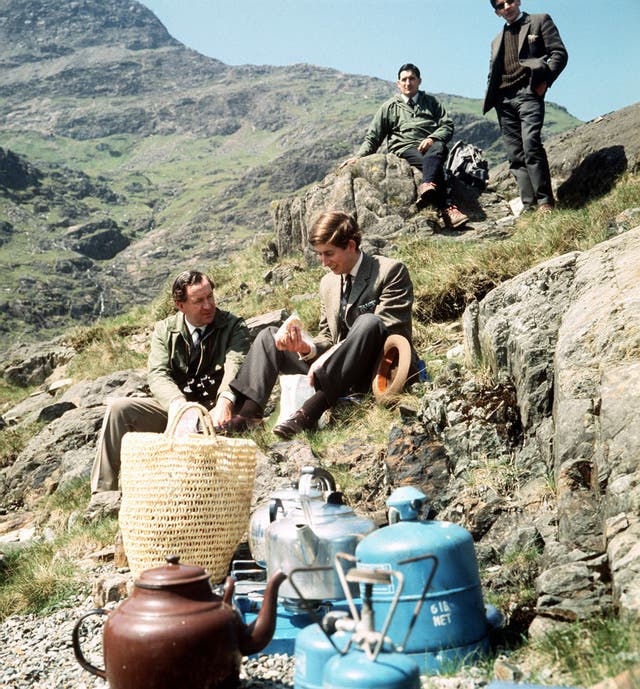
On July 1, the scene was finally set inside Caernarfon Castle, where the walls were adorned with gigantic banners.
The central feature was a low, simple, circular dais made of Welsh slate, below a modern perspex canopy, with three contemporary backless thrones for the Queen, Charles and the Duke of Edinburgh, and distinctive vermilion red investiture chairs for guests.
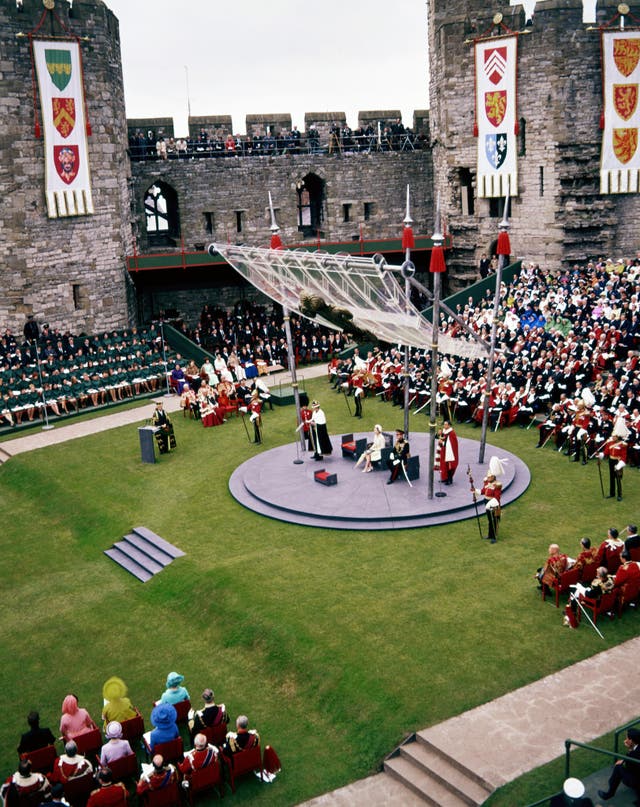
A young Charles, with his hair neatly combed into a side parting, was dressed in his uniform as Colonel-in-Chief of the Royal Regiment of Wales as he took his place in the grounds.

His sister Princess Anne, then only 18, channelled 60s fashion in a short blue coat-dress and pillbox hat, as she joined her grandmother the Queen Mother and aunt Princess Margaret.
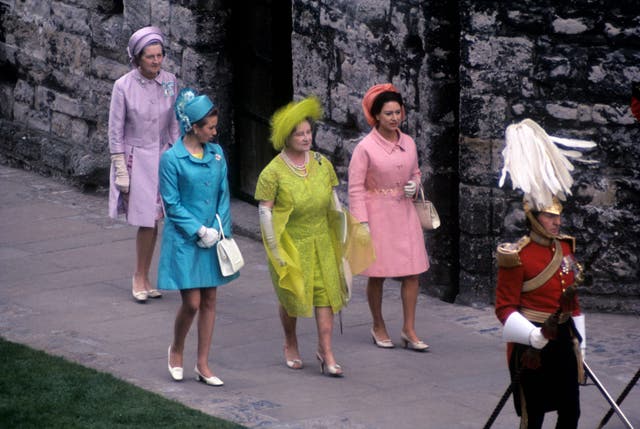
More than 4,000 guests filled the stands of the imposing medieval royal fortress – the birthplace of the first English Prince of Wales, the future King Edward II, in 1284.

During the ceremony, the Queen attired her heir with a sword, coronet, ring, rod and mantle of ermine and purple velvet.
The sword was a symbol of justice, the coronet a token of rank, the ring a token of duty and the rod a symbol of government.
The rod, ring and sword regalia were the same used by the future King Edward VIII at his Prince of Wales investiture in 1911, while the gold coronet was newly created.

Charles swore an oath to the monarch saying: “I, Charles, Prince of Wales, do become your liege man of life and limb and of earthly worship and faith and truth I will bear unto thee to live and die against all manner of folks.”
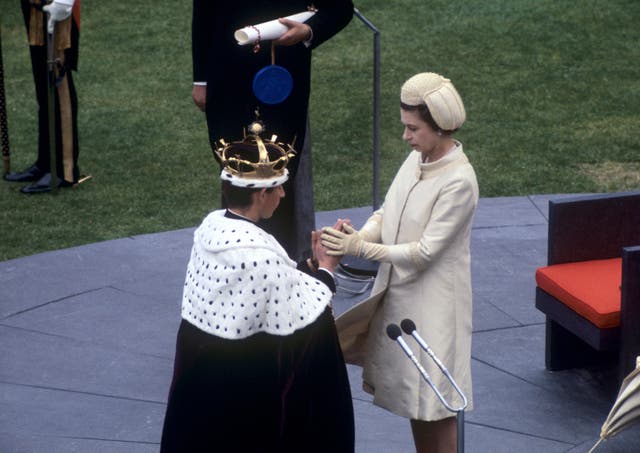
He later recalled: “For me, by far the most moving and meaningful moment came when I put my hands between Mummy’s and swore to be her liege man of life and limb and to live and die against all manner of folks – such magnificent medieval, appropriate words, even if they were never adhered to in those old days.”
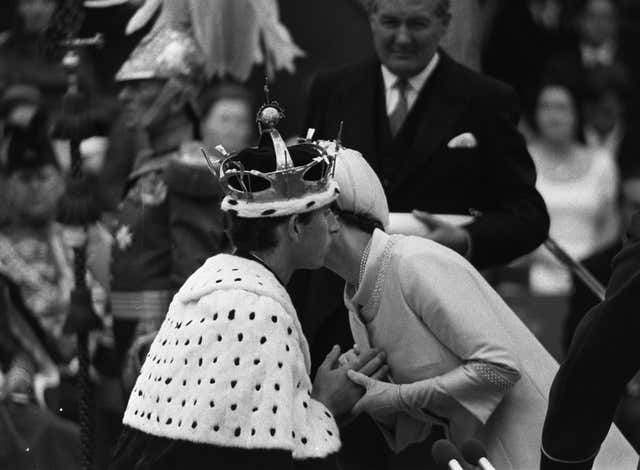
Charles gave two speeches, one in Welsh and one in English.

He was presented at the castle’s arched stone King’s Gate by the Queen following the proceedings to rapturous applause.
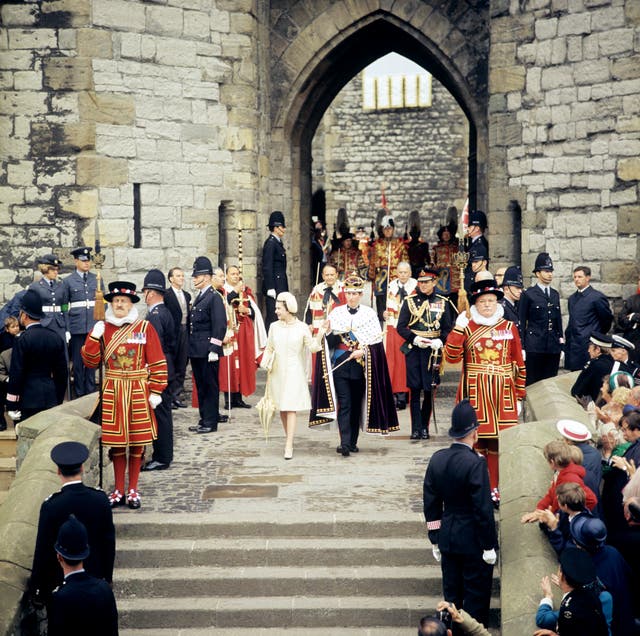
What came after for the 20-year-old was a week-long tour of Wales, with the prince later writing in his diary: “Last week has been an incredible one in my life and it now seems very odd not to have to wave to hundreds of people.”
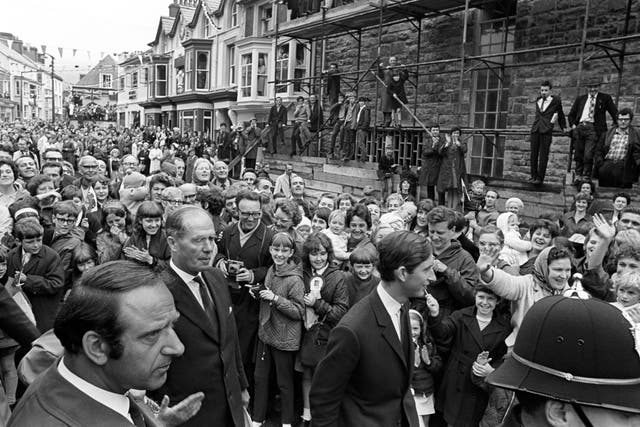
The prince’s visit this week, coinciding with the 50th anniversary of his investiture, is his 15th annual summer trip to Wales.
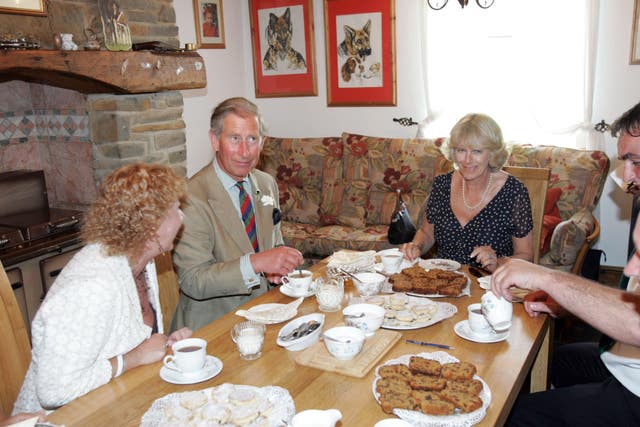

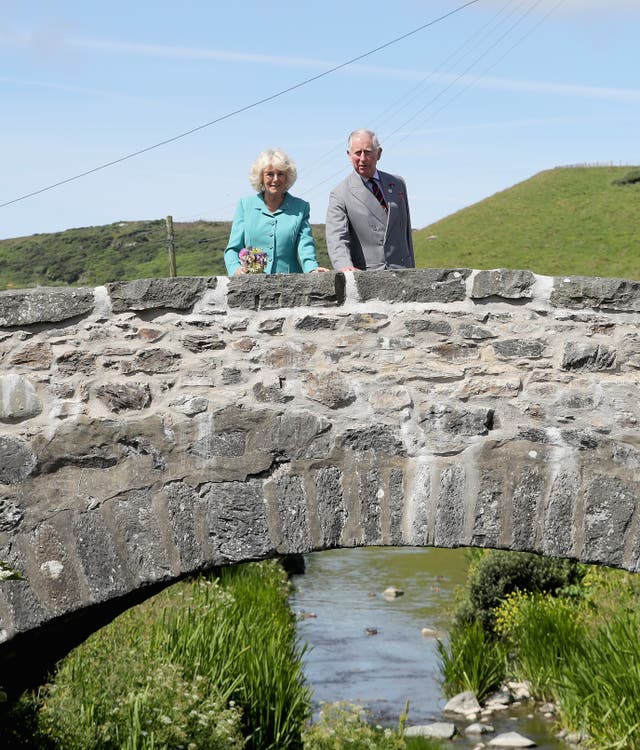


Comments: Our rules
We want our comments to be a lively and valuable part of our community - a place where readers can debate and engage with the most important local issues. The ability to comment on our stories is a privilege, not a right, however, and that privilege may be withdrawn if it is abused or misused.
Please report any comments that break our rules.
Read the rules here